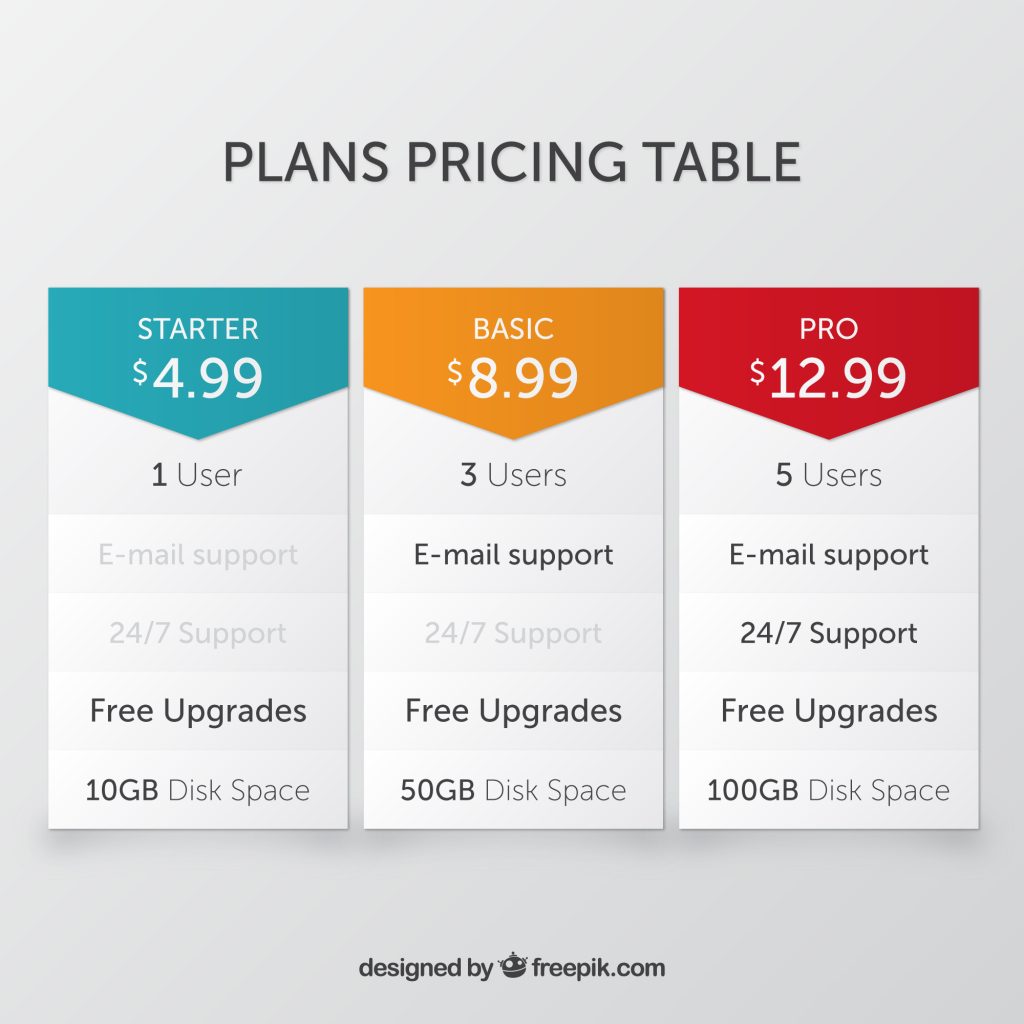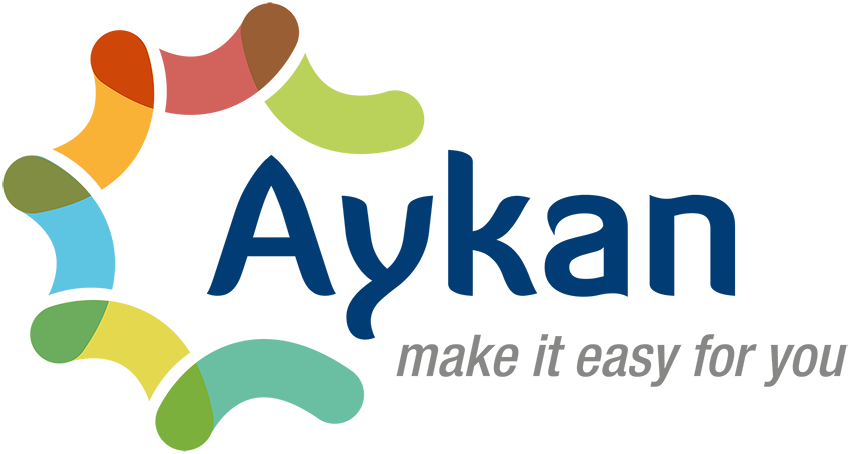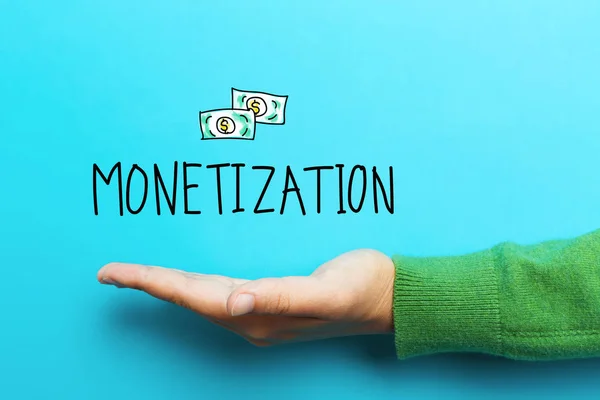As digital marketplaces continue to grow and evolve, operators are increasingly looking for smarter, more diverse ways to generate revenue. While the traditional commission-based model—where the platform earns a percentage from each transaction—remains effective, it often falls short in maximizing monetization potential, especially as competition intensifies and user acquisition costs rise. For platforms built with Sharetribe, the flexibility of its architecture opens the door to a wide array of advanced monetization strategies that go well beyond commissions.
Implementing alternative or supplementary revenue models not only boosts income but also strengthens platform resilience, user engagement, and scalability. Whether you’re building a service-based marketplace, a peer-to-peer rental network, or a B2B talent platform, diversifying how you earn ensures you’re not putting all your eggs in one basket.
In this article, we explore several high-impact monetization methods that can be integrated into Sharetribe marketplaces—from subscriptions and lead fees to promoted listings, advertising, and value-added services. We’ll break down each approach, examine real-world examples, and provide implementation tips to help you adapt these models to your platform with clarity and confidence.
Advanced Monetization Strategies for Sharetribe Marketplaces:
1. Subscription Plans for Providers
Subscription-based monetization is one of the most effective ways to generate consistent, recurring revenue from your marketplace. In this model, service providers or vendors pay a monthly or annual fee to access premium features, improve their listing exposure, or unlock additional tools that enhance their business operations. This approach not only creates a stable revenue stream for marketplace owners but also helps attract serious professionals who are committed to investing in their long-term success on your platform.

Subscription plans can be tiered—offering different levels of access and benefits. For example, a basic free plan might allow providers to list up to three services, while a “Pro” plan could unlock unlimited listings, advanced analytics, promotional badges, and priority placement in search results. These value-added benefits incentivize providers to upgrade and remain active on the platform, increasing overall engagement and trustworthiness.
Example: Consider a freelance services marketplace where professionals like designers, writers, or developers list their offerings. A paid “Pro” subscription plan could allow verified providers to access job-matching alerts, customer engagement data, and branded profile customization. This helps them stand out to potential clients while giving the platform an additional income stream that scales with its growth.
Implementation with Sharetribe:
Sharetribe supports recurring billing through Stripe, allowing you to set up automated monthly or yearly subscription plans. Operators can use Flex’s transaction engine to create custom flows that check subscription status before allowing providers to access specific features. For marketplaces built on Sharetribe’s open-source version, external tools like Memberstack, Outseta, or custom Stripe integrations can be used to manage user subscriptions. This monetization model is especially well-suited for B2B marketplaces, educational platforms, or any environment where repeat interactions with providers are expected and valued.
2. Lead Fees (Pay-Per-Lead Model)
The lead fee or pay-per-lead model monetizes your marketplace by charging service providers a fee whenever they receive a new inquiry, job request, or message that represents a potential business opportunity. Unlike commission-based models that charge only after a successful transaction, this approach generates revenue at the point of lead generation—making it ideal for platforms where transactions may occur outside the platform or are delayed due to longer sales cycles.

This model works especially well in marketplaces for high-ticket or consultative services such as home renovation, legal advice, coaching, or event planning. The value of a single lead can be significant, so providers are often willing to pay for quality inquiries—even if only a percentage convert into paying clients.
Example: Imagine a wedding planner who receives an inquiry from a couple looking for planning services. The moment the couple submits the inquiry through the platform, the planner is charged a lead fee (e.g., $5 or $10). This lead payment occurs whether or not the planner ultimately books the client. The idea is that each inquiry is a potential customer, and thus valuable enough to monetize.
This model encourages providers to respond promptly and take each lead seriously, while also allowing you as the marketplace operator to monetize every stage of the user journey, not just the final transaction.
Implementation Consideration:
While Sharetribe doesn’t offer out-of-the-box support for pay-per-lead logic, it can be implemented through external tools and integrations. Using platforms like Zapier, Make (formerly Integromat), or a custom back-end server, you can create workflows that monitor specific user actions—such as submitting a contact form or sending a direct message—and then trigger a Stripe payment or deduct a credit from the provider’s lead balance.
Alternatively, you can implement a prepaid lead credit system where providers top up their accounts, and each lead deducts from their available credits. This gives you more control and reduces friction at the point of engagement, as no immediate payment is required per lead. This model is scalable and provides an excellent way to monetize early interactions between users, especially in service-based or high-intent marketplaces.
3. Featured Listings and Sponsored Profiles
Featured listings and sponsored profiles are powerful monetization tools that allow providers to pay for premium placement on your marketplace—typically at the top of search results, in highlighted homepage sections, or within curated category blocks. This model not only creates a new revenue stream for marketplace operators but also incentivizes providers to invest in greater visibility and exposure.

When a listing or profile is marked as “featured,” it benefits from higher visibility, which can directly translate to more profile views, leads, and bookings. This is especially valuable in competitive categories where standing out is crucial to winning business.
Example: Consider a pet groomer who wants to stand out from dozens of other providers. They can pay $20 per month to appear in a “Top Rated Groomers” section on the homepage or be pinned to the top of search results in their city. This kind of placement increases trust and credibility, helping them attract more customers compared to standard listings.
Best Practices:
To maintain quality and exclusivity, it’s a good idea to limit the number of featured slots per category or region. This creates a sense of scarcity, driving up demand and perceived value. For example, offering only three featured positions per city makes the placement more desirable. You can also implement bidding or tiered pricing (e.g., homepage feature vs. category-only feature) to further maximize revenue.
To enhance value for sellers, provide them with analytics on how their sponsored status is performing—such as the number of additional views, clicks, or conversions. This data can justify their investment and encourage continued or increased spending on featured placement.
Implementation with Sharetribe:
While Sharetribe doesn’t provide built-in functionality for sponsored content, you can implement featured listings using custom fields and conditional logic in your search results template. Highlight these listings with a badge or “Featured” tag, and ensure they appear first in sorting logic. Payments can be handled through Stripe, and duration-based visibility (e.g., featured for 30 days) can be managed via backend automations or custom admin panels.
4. Advertising Space (Marketplace-Level Ads)
Introducing advertising space within your marketplace is an excellent way to generate passive income, especially once your platform starts to attract consistent user traffic. Ads can come in various forms—from internal promotions (highlighting your own features or services) to external advertisements through networks like Google AdSense or direct deals with relevant brands.

By monetizing high-traffic areas of your platform, you create a parallel revenue stream that does not rely on transactions between buyers and sellers. This is particularly effective for marketplaces with high visit volumes, niche audiences, or informational content (such as blog sections, service guides, or learning resources).
Example: A tutoring-focused marketplace can display banner ads promoting exam preparation apps, textbook retailers, or online learning platforms. These ads can be placed on the homepage, user dashboards, search results, or even in blog articles offering educational advice. In addition to passive income, such ads can offer value to your audience if they’re contextually relevant.
Integration Options:
If you’re using Sharetribe Flex or the Sharetribe Open Source version, you can embed ad scripts directly into your site templates. This allows you to integrate ad services like Google AdSense, Media.net, or direct-sell banner placements. You can strategically place customizable ad zones on:
Homepage banners
Search results pages
Service detail pages
Blog posts or resource content
Provider dashboards or booking confirmation screens
For direct ad sales, you can charge businesses in your niche (e.g., educational institutions, tools, event organizers) a flat monthly fee or use performance-based pricing (e.g., cost per impression or click).
Best Practices:
Prioritize relevance: Ensure that any ad displayed is relevant to your marketplace users to maintain trust and engagement. Irrelevant ads can degrade user experience.
Limit visual clutter: Don’t overcrowd your site with too many ads. Strategic placement is key to maintaining a clean, professional feel.
Track performance: Use tools like Google Analytics or heatmaps to track ad performance and refine placement. Share this data with advertisers if offering sponsored campaigns.
Considerations:
If your platform is still in early growth stages, it may be better to focus first on user experience and core monetization (like subscriptions or commissions). Advertising can be layered in later once you have a loyal user base and meaningful traffic levels. Also, be aware that some ad networks have content policies that may not align with all marketplace categories, so always vet those requirements first.
5. Verified Badges and One-Time Feature Upgrades
Trust and credibility are fundamental to any marketplace’s success. Offering verified badges and one-time profile upgrade options can serve as both a revenue opportunity and a trust-building mechanism. Providers are often willing to pay to stand out—especially if that investment improves their chances of winning business.

A verified badge can signal that a provider has passed certain checks, such as identity verification, license validation, or background screening. These badges help buyers feel more confident about who they’re hiring or purchasing from, which in turn can increase conversion rates.
Example: A home repair provider might pay a one-time verification fee to have their government-issued ID validated. Once verified, their profile displays a “Verified Pro” badge, signaling to customers that the provider has been screened by the platform. This simple visual cue can dramatically influence user trust and booking decisions—similar to how platforms like Airbnb and LinkedIn use verification features.
One-time feature upgrades can include more than just badges. Providers could unlock premium layout templates for their listings, the ability to add extra media (like videos), or access to analytics dashboards showing profile performance.
Implementation Idea:
Using Stripe’s one-time payment functionality, this feature can be easily implemented within Sharetribe by adding a custom transaction flow. Alternatively, you can create a simple checkout page linked from the provider dashboard or profile settings. Once payment is processed, the user’s profile status can be updated to reflect their verified or upgraded standing.
You can enhance the effectiveness of this monetization method by integrating it into your onboarding flow, where new providers are prompted to complete verification for higher visibility. Additionally, you might offer these upgrades as upsell options after a provider receives a certain number of bookings or positive reviews—making the timing of the offer feel more rewarding and relevant.
6. Tiered Access to Leads or Tools
Tiered access is a strategic monetization method that adds structured value to your marketplace by restricting certain features or content based on a provider’s subscription level. This model not only encourages freemium adoption—where users can try basic functionality for free—but also creates a clear incentive to upgrade for serious providers who want full access to leads or professional tools.

In this approach, basic-tier users (often on a free or entry-level plan) have limited visibility into the marketplace’s demand side—for example, they may only view a few customer inquiries or job requests per month. Meanwhile, premium-tier providers, who pay a recurring fee, enjoy unrestricted access to leads and advanced tools like messaging, proposal submissions, analytics, or marketing features.
Example: Consider a job or gig marketplace. A new or casual provider on the free tier may be able to view just 3 customer leads per month and not be able to contact them unless they upgrade. On the other hand, a premium-tier provider can see and respond to an unlimited number of leads, send proposals directly, and receive email notifications the moment a new lead is posted. This kind of feature gating makes the premium tier feel indispensable to active users.
7. Data & Analytics Sales (Enterprise Add-ons)
In many specialized marketplaces—especially those serving B2B sectors—data and analytics can become a valuable revenue stream. By collecting and analyzing transaction data, user behaviors, and market trends, marketplace operators can create premium analytics packages that provide actionable insights to providers or businesses on the platform.
These insights might include customer behavior patterns, such as peak service demand times, popular service categories, or geographic hotspots where demand is highest. Marketplaces can also offer competitive benchmarks, showing how individual providers compare against peers in terms of pricing, volume, or customer ratings. This kind of intelligence enables sellers to optimize their offerings, improve pricing strategies, and ultimately increase their revenue.

Example: A logistics marketplace might sell a quarterly report to carriers and freight providers, detailing the most in-demand routes, seasonal fluctuations, and pricing trends. Sellers can use this data to plan capacity, adjust rates, or identify underserved markets—giving them a competitive edge.
Implementation Considerations:
This monetization avenue often targets enterprise or premium sellers who value strategic insights and are willing to pay for data-driven decision-making support. To implement this, you can leverage data export tools, custom dashboards, or third-party BI tools integrated with your marketplace backend. Sharetribe’s API allows for data extraction that can feed into custom analytics solutions or external platforms.
Privacy and Compliance:
When monetizing data, it is crucial to prioritize user privacy and compliance with data protection regulations such as GDPR and CCPA. All sold insights should be aggregated and anonymized to protect individual user identities and transaction details. Clear communication about what data is collected and how it will be used builds trust and ensures regulatory adherence.
Offering analytics as an add-on not only diversifies your revenue but also deepens provider engagement by empowering them with intelligence that can boost their success on your platform. This approach positions your marketplace as not just a transactional venue, but a strategic partner in their growth.
8. Transaction Insurance or Protection Fees
Offering transaction insurance or protection plans is an effective way to build customer confidence while generating additional revenue for your marketplace. These optional add-ons provide peace of mind to buyers by safeguarding them against common risks such as last-minute cancellations, service failures, damages, or disputes.

By allowing customers to purchase a small fee-based insurance or protection plan at checkout, marketplaces can mitigate the perceived risk of booking services online. This reassurance often leads to higher conversion rates and repeat usage, as buyers feel more secure in their transactions. At the same time, this feature creates a new income stream that complements existing fees or commissions.
Example: A home services marketplace might offer a $5 “Service Protection Plan” that guarantees customers a full refund or a free rebooking in case the booked provider cancels or delivers subpar work. This policy not only boosts customer satisfaction but also encourages providers to uphold high service standards.
Implementation Tip:
Integrating protection fees can be done by adding a toggle option during the checkout process, allowing customers to opt-in for coverage. Payment gateways like Stripe support conditional fees and can handle the additional charges seamlessly. Custom transaction logic can automate the management of protection plans, including triggering refunds or claims based on predefined dispute resolutions.
Clear communication about what the insurance covers and how claims are handled is essential to foster trust and avoid misunderstandings. Offering transaction protection not only increases marketplace credibility but also enhances the overall customer experience, making it a valuable monetization feature for marketplaces focused on high-trust services.
9. Booking or Convenience Fees
Introducing a booking or convenience fee is one of the simplest and most widely accepted monetization strategies for marketplaces. This involves charging customers a small flat fee—typically a few dollars or a percentage of the transaction—at the time of checkout. These fees help cover essential operational costs such as payment processing, server maintenance, customer support, and fraud prevention.
This approach is particularly useful in marketplaces where it’s not feasible or desirable to charge providers directly—such as platforms dealing with lower-margin services or newer providers who may be price-sensitive.

Example: A local services marketplace adds a $2 “platform usage fee” to every booking made. This small charge is used to maintain the platform’s infrastructure and ensure continued service reliability. Because the fee is nominal, it generally does not deter customers—especially when the value of the platform is clearly communicated.
Implementation Tip:
Platforms like Sharetribe allow for the addition of flat or percentage-based fees at checkout using custom transaction processes. It’s critical, however, to ensure full transparency—clearly show the convenience fee during the payment process and explain what it supports (e.g., “This fee helps support platform maintenance and secure transactions”). Failure to disclose this clearly can lead to booking abandonment or trust issues, so communication is key.
10. Community Access or Educational Content
In marketplaces built around niche communities—such as fitness, wellness, creative arts, or professional development—offering exclusive access to community spaces or educational content is a powerful way to drive monetization while deepening user engagement. This model leverages the marketplace’s authority and audience to become more than a transactional platform—it becomes a hub of learning, networking, and value-added experiences.
Example: A wellness marketplace introduces a $10/month subscription plan that grants users access to a private community forum, live Q&A sessions with certified health coaches, and weekly masterclasses on mindfulness, nutrition, and productivity. This not only generates recurring revenue but also builds brand loyalty and creates additional touchpoints with users.
Execution Strategy:
To implement this, marketplaces can integrate third-party community platforms like Circle, Slack, or Discord. These tools allow you to build vibrant member spaces that can be moderated, tiered, and customized. Using Stripe or Sharetribe’s integration capabilities, access can be gated behind a paywall—only paid members are granted invites or credentials to join the private community or view premium content.
Additionally, content like video tutorials, downloadable guides, or recorded webinars can be stored and served through platforms like Vimeo, Notion, or Kajabi, and gated via login permissions or embedded behind paywalls on the marketplace site.
This strategy is especially effective when combined with subscription models or tiered pricing plans, allowing users to choose the level of access they want—from community-only memberships to full educational bundles. It fosters long-term loyalty and positions your marketplace as an authority and educational resource in the vertical it serves.
Conclusion
While commissions are a straightforward way to monetize a marketplace, they’re far from the only option. In fact, over-reliance on commission-based revenue can limit your growth potential and leave your marketplace vulnerable to competition or pricing wars.
By diversifying your monetization model—through subscriptions, lead fees, advertising, premium features, and value-added services—you create a more stable, scalable, and profitable business. Sharetribe’s flexibility allows operators to tailor these models to fit their niche, customer base, and long-term goals.
Choose the models that align best with your user behavior and market dynamics, and always keep an eye on balancing user value with monetization. A thoughtfully monetized marketplace isn’t just more profitable—it’s more valuable to all stakeholders involved.
FAQ's
1. Can I implement these monetization models using Sharetribe without custom development?
Some strategies—like subscription plans, convenience fees, and one-time upgrades—can be implemented using Sharetribe Flex’s native Stripe integration and custom transaction processes. However, features like lead fees, tiered access, or advertising often require custom front-end development or third-party tools (e.g., Zapier, Circle, or custom APIs) to fully execute.
2. What monetization strategy works best for a new Sharetribe marketplace?
For early-stage marketplaces, it’s best to start with commission fees and customer-side booking fees to reduce friction for providers. As the platform grows and gains traction, you can gradually introduce premium features like subscriptions, featured listings, and community memberships to diversify revenue streams.
3. How do I ensure users don’t feel overwhelmed by too many charges or fees?
Transparency is key. Make sure all fees are clearly communicated during checkout or onboarding. Bundle offerings (e.g., a Pro Plan that includes multiple benefits) can also help reduce perceived cost. Avoid “nickel-and-diming” by combining related features under a single pricing tier.
4. Is it possible to offer multiple monetization strategies at the same time?
Yes, many successful marketplaces use a hybrid monetization model. For example, you can charge providers a subscription fee, offer optional upgrades like verified badges, and still apply a small customer booking fee. Just ensure your pricing model remains simple and scalable.
5. How do I test which monetization model is most effective for my audience?
Use A/B testing and analytics to measure conversion rates, retention, and revenue across different monetization features. You can also launch new features as limited-time experiments or beta programs, collecting feedback from users before rolling them out permanently.






